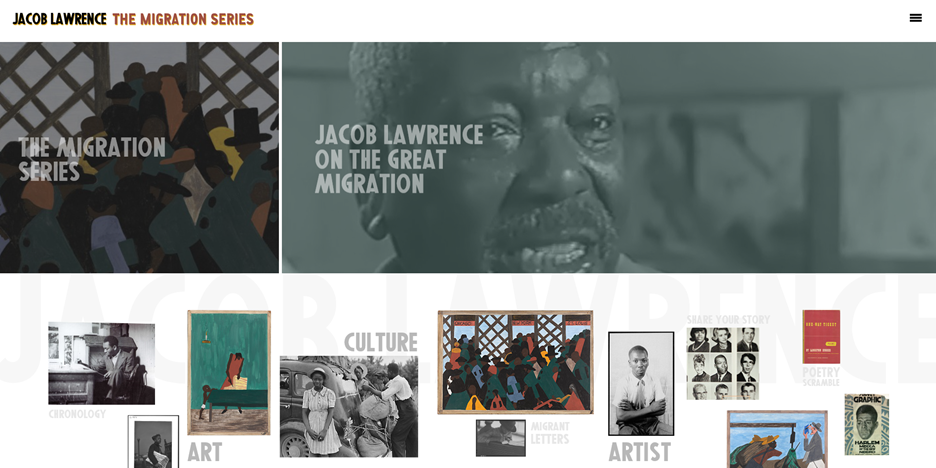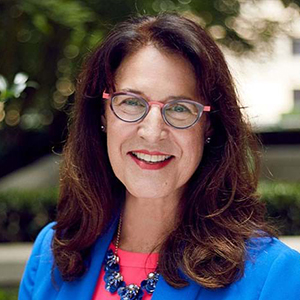
The Big Picture
In 1941, a 23-year-old New York painter named Jacob Lawrence gave the world an extraordinary gift: 60 small, colorful panels, known today as “The Migration Series.” These amazing paintings tell the beautiful and painful story of the Great Migration, the mass exodus of African-Americans from the Jim Crow South to northern cities that began during World War I.
 Lawrence’s paintings are captivating and devastating to look at, with their bright colors and deceptively simple figures. They’re explained by matter-of-fact captions that Lawrence and his wife Gwendolyn Knight excerpted from the oral histories of hundreds of African-Americans who left their homes in the rural South because they hoped they’d find a better life in places like New York, Chicago and Seattle. Sometimes, in some ways, they did. In other ways, Lawrence’s paintings remind us it was much more complicated.
Lawrence’s paintings are captivating and devastating to look at, with their bright colors and deceptively simple figures. They’re explained by matter-of-fact captions that Lawrence and his wife Gwendolyn Knight excerpted from the oral histories of hundreds of African-Americans who left their homes in the rural South because they hoped they’d find a better life in places like New York, Chicago and Seattle. Sometimes, in some ways, they did. In other ways, Lawrence’s paintings remind us it was much more complicated.
Why am I telling you this? Well, for one thing, right now you can (and should!) see the whole “Migration Series” in one place — a rare treat, since the panels now “live” in two different museums — at the Seattle Art Museum. For another, in my opinion, the “Migration” paintings do exactly what great art is supposed to do: They use storytelling to connect us, to tell essential truths and ask hard questions, to break our hearts and give us hope. They’re almost 80 years old now, and the story they tell is grounded in a very particular time and place — but even today, here in Seattle in 2017, once you see them you’ll never forget them.
That’s why I was thinking about my visit to the Lawrence exhibit the other night while I was watching the Oscars.
Don’t get me wrong: Like everybody else, I’ll spend the rest of the week skimming the best- and worst-dressed lists on the internet while I eat lunch. (Who wins my Best Dressed statuette this year? It’s a tie between Octavia Spencer’s amazing feathered skirt, Kirsten Dunst’s ball gown with pockets, and Taraji P. Henson from head to toe … so I’ll cheat and give the prize to the entire cast of “Hidden Figures.”)
But for me, this year more than ever, it wasn’t all Hollywood glamour and glitz. In fact, this year’s best movies do the same thing that the “Migration” paintings do. They, too, use very specific stories to ask hard questions and tell essential truths. In movies like “Lion,” “Fences,”
“Manchester by the Sea,” and “Moonlight,” we visit finely drawn worlds whose details might not be that familiar to us, and we meet characters we might not recognize right away. Still, they speak to us. They remind us of what we value, and what we share. That’s what great art does.
So, what does all this have to do with WE? As strange as it sounds, is there anything we can learn from the Academy Awards (besides how to be gracious winners and losers, and how to give a great speech, and how to look sharp in a tuxedo— all very important lessons, by the way)?
I think there is. At this year’s Oscars in particular, I saw a lot of artists who were fed up, pissed off and fighting back. I saw a lot of artists who are done telling the same story over and over. I saw a lot of artists who don’t think there’s just one “right” way to be successful, and who know there’s a whole universe of stories out there to be told — and a whole universe of people out there who are ready to listen.
What we saw at the Oscars was a roomful of people who are doing their best to tell the truth. We saw it during the commercial breaks, too. In this much-touted ad, under attack even before it aired, the New York Times ran through a long list of contradictory claims about current events, from “the truth is a woman should dress like a woman” to “the truth is climate change is a hoax” to “the truth is alternative facts are lies,” before concluding that “the truth is more important now than ever.”
I agree. As the Times ad says, the truth is hard. It’s hard to find it; it’s hard to tell it; and it’s hard to get people to listen to it. And so the Oscars reminded us that “Moonlight” isn’t just a movie, and Jacob Lawrence’s paintings aren’t just paintings. The truths they tell make us see the world differently, and they can make us act in the world differently, too. Inspired storytelling inspires action — and that’s the work that really matters.
Read more posts from WE Global CEO and Founder Melissa Waggener Zorkin here.
Follow Melissa on LinkedIn and Twitter.
The latest blogs from WE
Decoding Gen Alpha: A Primer on the Next Gen of Consumers
Why Gen Alpha Will Fuel Spending This Season
Why Reputation Is a Business Driver in Healthcare


